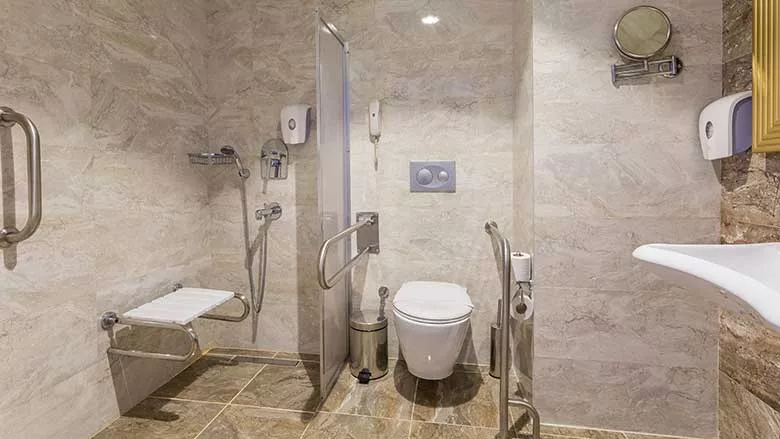Matt Michel: The aging-in-place opportunity
Tips and tricks to help plumbing contractors meet an increasing demand.

Image courtesy of mgstudyo / iStock / Getty Images Plus
Ninety percent of seniors would rather remain in their own homes than move to assisted living, according to AginginPlace.org. Given the costs of assisted living, aging-in-place makes financial sense as well. Yet, many homes are not ready, which presents an opportunity for plumbing contractors.
Why age-in-place?
People want to stay in their own homes because, well, they are their homes. They are familiar and comfortable. They contain cherished memories. Their homes make it easier for children and grandchildren to visit.
It is easier than ever for people to remain in their homes. There are a variety of resources for healthcare assistance, which may be covered under Medicare and supplemental insurance. Grocery stores are increasingly delivering. Just about anything can be purchased on Amazon and delivered within a day or two.
However, the home must be able to physically accommodate the needs of aging adults. Some of the most important accommodations are made by plumbers.
What plumbers can offer
Bathroom grab bars — Offer attractive ones, not something that belongs in an institution. In addition, replace towel bars with grab bars that will bear a load.
Folding toilet grab bars — There are grab bars that rest against the wall and fold down when needed. Again, get attractive ones.
Open toilet paper holders — It can be hard for arthritic seniors to put toilet paper rolls on spring-loaded spindle-type toilet paper holders. Replace these with open holders where the toilet paper rolls can be slid on and off.
Elevated toilets — Toilet booster seats are unattractive. A better option for seniors who have trouble getting on or off a toilet is to replace 10-inch to 15-inch toilets with 18-inch to 20-inch high toilets.
Lever faucet handles — Levers are easier for seniors to open and close than knob type.
Touchless or bump faucets — Touchless or bump faucets are even easier than lever-handled faucets.
Non-skid safety strips — The biggest risk to seniors are slips and falls. Add safety strips to bathtubs and showers.
Walk-in bathtubs — For seniors who prefer bathtubs but have trouble climbing in and out, a walk-in bathtub is the best solution.
Roman no-step showers — Better than a bath is a Roman shower without a lip or step to make it easy to roll in. A drop-down seat affixed to the wall is another safety feature and superior to a stool.
Wheelchair sinks — Elegant sinks are now available that are compatible with wheelchairs. Seniors can roll a wheelchair under the sink to wash their hands, brush their teeth, etc.
Mixing valves — Each shower and sink can be fitted with mixing valves to limit the potential for hot water scalding. Whole-house solutions are also available by adding a mixing valve to water heaters. While energy conservation proponents argue for 120° F tank temperatures, keeping the water at 140° F kills the legionella virus.
On service calls, ask older homeowners how long they expect to remain in their homes. If they answer forever, suggest beginning the process of making kitchens and baths handicap friendly.
Selling aging-in-place
On service calls, ask older homeowners how long they expect to remain in their homes. If they answer forever, suggest beginning the process of making kitchens and baths handicap friendly. Prepare a catalog of options with pictures to dispel notions of institutional-looking products. Simply give a copy of the catalog to the homeowner. Note that preparing now will make it easier down the road.
Call on home healthcare services, occupational therapists and doctors who serve elderly patients. Share copies of the catalog with them so they can pass them along to their clients. Though some may not accept them, offer a spiff for any leads.
Reach out to local service clubs to talk about aging-in-place and some of the solutions available from the plumbing industry.
Aging-in-place will increase
Demand can only go up as baby boomers age and desire to remain in their homes. The rising cost of assisted living and nursing homes makes remodeling to accommodate seniors a cost-effective alternative. The way seniors were stacked into nursing homes during COVID-19 further fuels the desire of older citizens to remain in their homes.
Looking for a reprint of this article?
From high-res PDFs to custom plaques, order your copy today!









